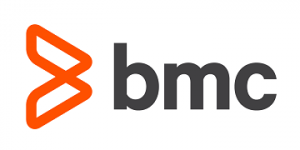This post is an excerpt from GovLoop’s recent guide, “The Top 30 Government Innovations of 2017.”
An interview with Jeremy A. Wilson, Federal Chief Technology Officer, BMC
With more than 20 billion devices predicted to be connected by the year 2020, managing a seamless and secure IT enterprise will be no small feat in the federal government’s increasingly complex environment. Operations teams work to keep systems running efficiently while security teams must ensure that those systems remain secure, up-to-date and comply with federal regulatory standards. When these competing priorities lack integration, it can create significant gaps that can make organizations more vulnerable to security threats and negatively impact the overall operational efficiency of the agency.
That’s why government agencies are turning to BMC solutions to link IT Security and IT Operations teams together to work with shared accountability, processes and tools to ensure that security is not sacrificed while maintaining a commitment to uptime and performance.
These solutions will enable both teams to become more agile and move to a proactive security position for both on-premises or cloud services. It will also allow the teams to more readily embrace key business initiatives related to managing the impact of digital transformation, the Internet of Things, and continuous delivery of services. These vital initiatives, however, can create significant security concerns if they lack rigorous and adaptable controls.
To learn more about how government agencies should navigate the future of increasingly complex IT environments, GovLoop interviewed Jeremy A. Wilson, Federal Chief Technology Officer at BMC, a global leader in innovative software solutions with a core focus on digital enterprise management. BMC solutions ensure continuous improvement, innovation, and a competitive advantage for digitally driven enterprises, from mobile to mainframe.
Seamless collaboration between IT Security and IT Operations is imperative to effectively mitigate security threats. That’s where BMC SecOps comes in, it allows for critical vulnerabilities to be prioritized and remediated and compliance violations to be systematically addressed through an integrated and automated approach across all environments. “Think of SecOps as a management approach that bridges the gap between security and operations teams, in much of the same way that DevOps unifies software developers and operations professionals,” Wilson said. “Without this collaboration, agencies will not be able to effectively keep up as security threats rapidly evolve and become more sophisticated.”
Having the capability to understand relationships between data center assets and multi-cloud services from a single perspective is another important consideration. Analyzing data from multiple cloud vendors isn’t easy. Agencies must have the proper analytics tools in place so they can make fact-based decisions to anticipate and shape business outcomes to avoid undue risk and cost. Additionally, traditional approaches to security and compliance fail in multi-cloud environments, and are often ignored in the race to continuously deliver new applications.
BMC’s Discovery for Multi-Cloud solution provides IT with better visibility into how the infrastructure enables the digital business. The solution automates asset discovery and application dependency mapping to build a holistic view of all your data center assets, multi-cloud services, and their relationships.
With automated discovery and dependency mapping, you can formulate and execute a plan to resolve known vulnerabilities with the least amount of risk. “It helps you evaluate business impact more quickly and conclusively, and then respond to critical events with a reduced risk of incorrect assessment,” Wilson said. “It can proactively identify trends, abnormalities, and security vulnerabilities and automatically remediate vulnerabilities before they impact the business.”
The need to efficiently measure performance is also critical. That’s where BMC TrueSight AIOps, powered by Artificial Intelligence (AI) and Machine Learning (ML), fits in. The solution improves the overall quality and performance of digital services running in multi-cloud environments by analyzing the infrastructure and automatically applying predictive analytics.
“TrueSight AIOps uses sophisticated algorithms along with real-time performance monitoring, and uses automation to perform triage and remediation,” Wilson said. “It’s driven by analytics and can dynamically identify patterns and trends in digital data that are otherwise unrecognizable.”
By combining these tools from BMC, government agencies now have the capability to strengthen their overall security posture, gain better visibility of their organizational assets, and embrace AI and ML capabilities to improve the quality and performance of their digital services.
As government looks to 2018 and beyond, agencies must embrace new methodologies to keep up with this digital transformation and drive their missions forward without sacrificing security, visibility, and performance. When agencies can meet their security and operational objectives without sacrificing the agility needed to deliver better services, everyone wins.
Find GovLoop’s top 30 government innovations here.

